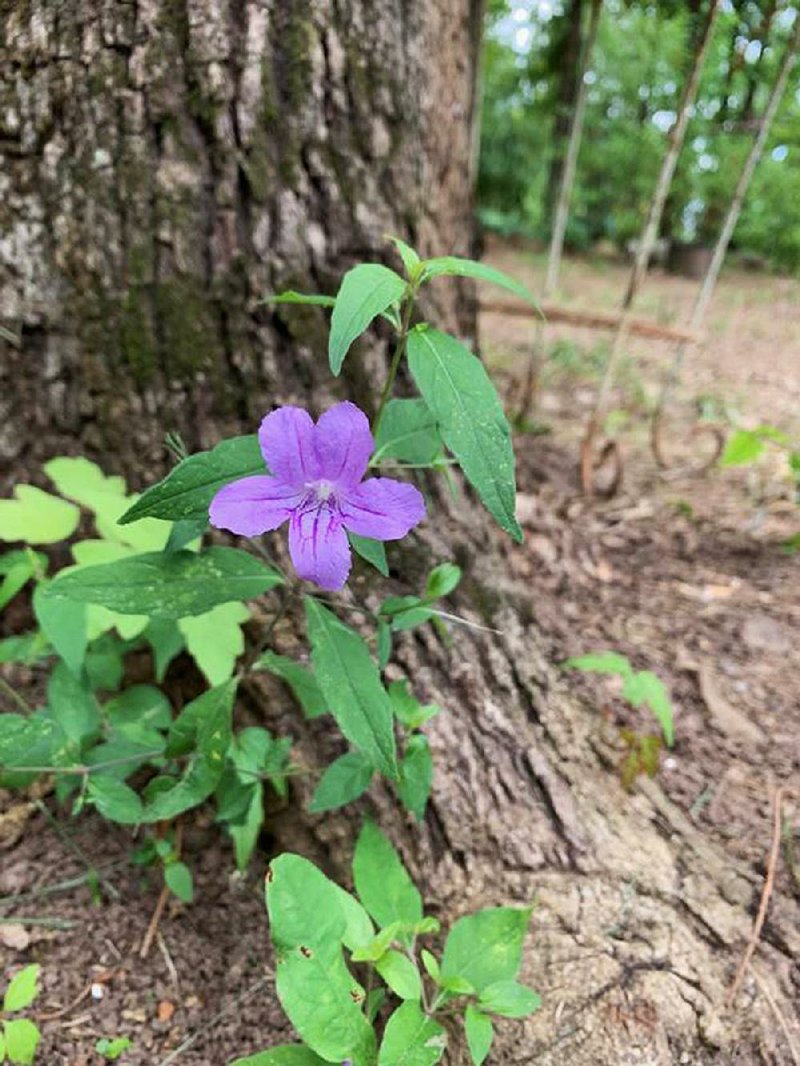Q We live in Bentonville and have enjoyed your advice over the last 20 years that we've been here. Our small backyard faces south and we've tried for the past 5-6 years to grow a small yaupon holly, twice, in a corner for birds to light in between feeding from our feeders. It's in an area that has water running through it during big rains but afterward is not in water. Do not know why the yaupon cannot survive in this sunny area. We need something that stays small so the Bermuda grass survives to hold the soil in. Do you have any suggestions for an evergreen type tree for this area? I've done some online research but have not found anything that seems to fit the bill. Thank you for any help you can provide.
A I am surprised about the yaupon, since they are usually quite tough. Does it have to be an evergreen shrub or small tree? Deciduous hollies (Winterberry) are quite tolerant of the conditions you are describing and although they lose their leaves in the winter, the females have beautiful red or orange berries. Elderberry is another suggestion, and there are green-, purple- and yellow-foliaged forms available.
Q We have a redbud tree growing in our yard that we bought 12 years ago. We love it and it is very pretty. My wife and I bought six acres of land in the Cherokee Village area and there are no redbuds on our property. We would like to take the seeds that are currently hanging from our tree and plant them on our property. What is the proper way to harvest the seeds and when is the appropriate time to plant the seeds?
A Redbuds can be grown from seed, but it does take some work. Harvest the seeds in the fall when they are brown and dry. Remove the seeds from the bean-like pods. The seeds are hard and have an impermeable seed coat so they must go through both scarification (scarring or mechanically breaking the outer seed surface) and then stratification (a cool, moist storage period). In nature they are scarified naturally when eaten by a bird or squirrel; after they come out the other end, they are naturally stratified by sitting in the cool, moist soil all winter and can then naturally germinate. Commercially, scarification is done by soaking in sulfuric acid, but home gardeners can simply put them in boiling water for a minute or two and then put them in a plastic bag with moist, sterile potting soil. Store the bag in your refrigerator for three months, then pot them up or sow them where you want them to grow.
Q My friend in Perry County sent me this and wanted to know if it's native or not. I have not seen this in Siloam Springs area. Can you shed some light on name, native or escape? I did tell her she needs to get rid of the poison ivy.
A The plant is a native Ruellia, commonly called wild petunia or Mexican petunia. We have two species in the state -- from the photo this one appears to be Ruellia strepens or the smooth petunia. The other species is Ruellia humilis, which has hairy stems and leaves. They are tough perennials and given moisture and fertilizer can spread a bit aggressively.
Q I have two red tipped photinias that all the leaves are falling off. Should I have the limbs cut off or the trees cut down?
A Red tip photinias have been plagued for years by a leaf-spotting disease that can lead to defoliation. Death is slow in coming, but the lingering plants are not the most attractive in the world. My new motto is "Life is too short to live with bad plants." I would remove them, and begin planting a diverse mix of substitutes. Your options depend on what look you are trying to achieve.
Q Is it OK to cut off the bloom stems of hosta and amaryllis instead of leaving them to wilt down as need to do with the greenery that will feed the bulb? What about the seed pods that also come out on some of the bloom stems?
A Unless you plan to try to grow either plant from seed, there is no reason to leave the seed pods. They are not that attractive and are taking energy away from the plant. I usually remove the flower stalks as the blooms fade.
Retired after 38 years with the University of Arkansas Cooperative Extension Service, Janet Carson ranks among Arkansas' best known horticulture experts. Her blog is at arkansasonline.com/planitjanet. Write to her at P.O. Box 2221, Little Rock, AR 72203 or email
jcarson@arkansasonline.com
HomeStyle on 06/22/2019
